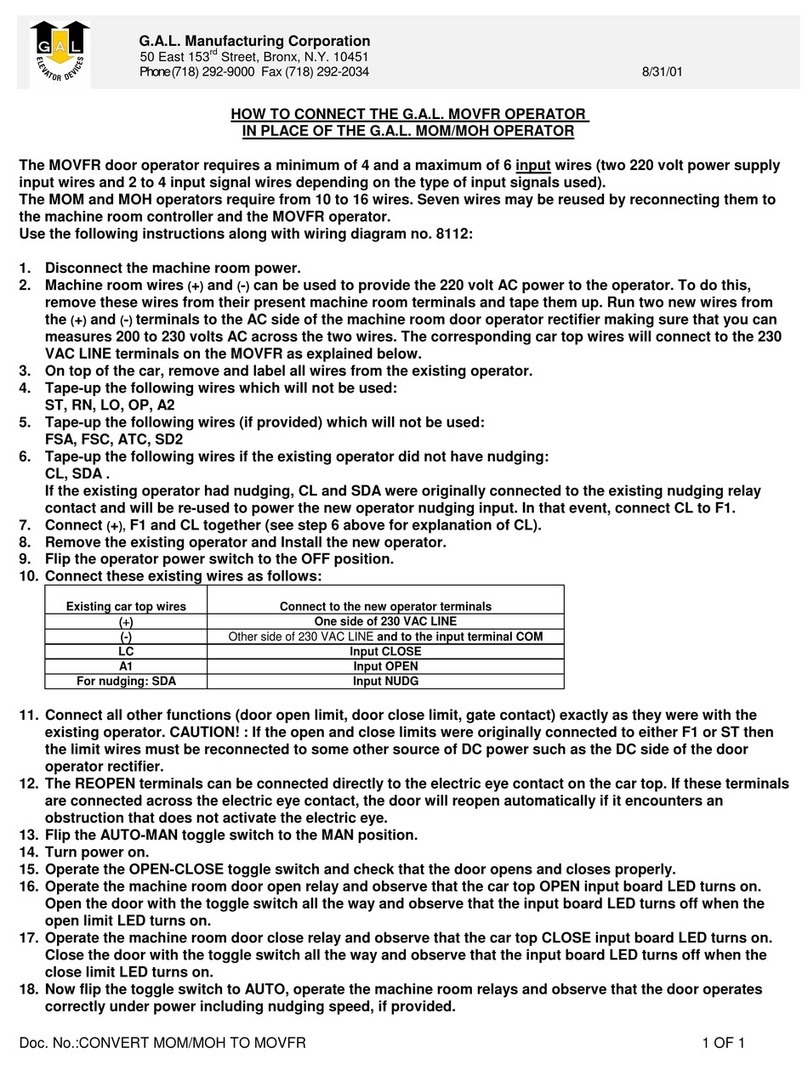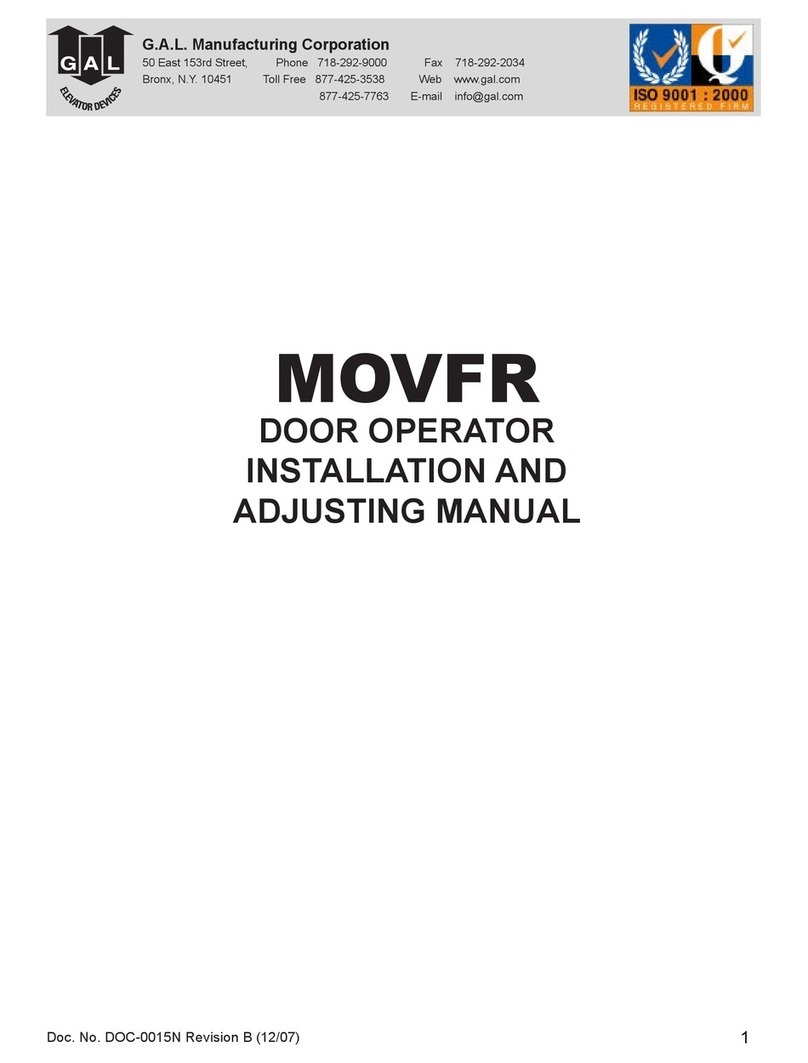
2
SAFETY STANDARDS:
xCSA Certified. B44.1/ASME- A17.5
xComplies with the following CE and IEEE safety standards of
EN61000-4-2, EN61000-4-3 EN61000-4-4, EN61000-4-5, EN61000-4-6, EN61000-4-8,
and IEEE STD C62.45-1992
xEMC conformity report is available
A POWERFUL SYSTEM:
x230VAC and 115VAC power supply versions are available
xVariable voltage, variable frequency (VVVF) drive
xA ½ HP AC motor is used to accommodate for most of door loads, friction, and wind pressure
HARMONIC AND LINEAR MODELS ARE AVAILABLE:
xThree models of VFE2500 are currently available:
¾VFE2500-HH : Heavy duty Harmonic model
¾VFE2500-GL : Light duty Linear model
¾VFE2500-HL : Heavy duty Linear model
NON-CONTACT SENSORS:
xOptical sensors and Hall-effect sensors for final limits, door protection monitor, and narrower
door limit.
CONVENIENCE INDICATORS:
xLight Emitting Diodes (LEDs) on the main board are used to indicate status of all important
functions:
Door open, close, nudging, heavier, narrower input signals,
Door open, and close directions,
Open, and close slowdown,
Obstruction detection signal,
Stall reverse,
Frequency failure,
DOL, DCL, AUX (Narrower door), and DPM (Door Protection Monitor)* output signals,
Door-width learning completion.
UNIVERSAL INPUTS AND OUTPUTS:
xUniversal inputs accept control signals in form of contacts or signal voltages;
from 24-230V AC or DC.
xOutput contacts, rated at 10Amp, 230VAC, include:
Door Close Limit (DCL),
Door Open Limit (DOL),
Re-Open (RE-OPEN),
Door Protection Monitor (DPM),
Auxiliary/Narrower Door (AUX),
Edges Timeout (ET)
xAll input modules, output relays, and connectors are pluggable for easy replacement.
KEYPAD (PARAMETER UNIT):
xKeypad programming with LCD display is available to adjust, monitor, copy, change
parameters, upload parameter sets, and to learn the door width distances.
xDefault parameter sets are ready for all ECI operator models.
xDifferent parameter sets for heavier door and narrower door are available for proper
adjustments to comply with codes.
xThe ability to copy (read) and download (write) parameter sets enables reduced setting time
on similar door operators.
2

































